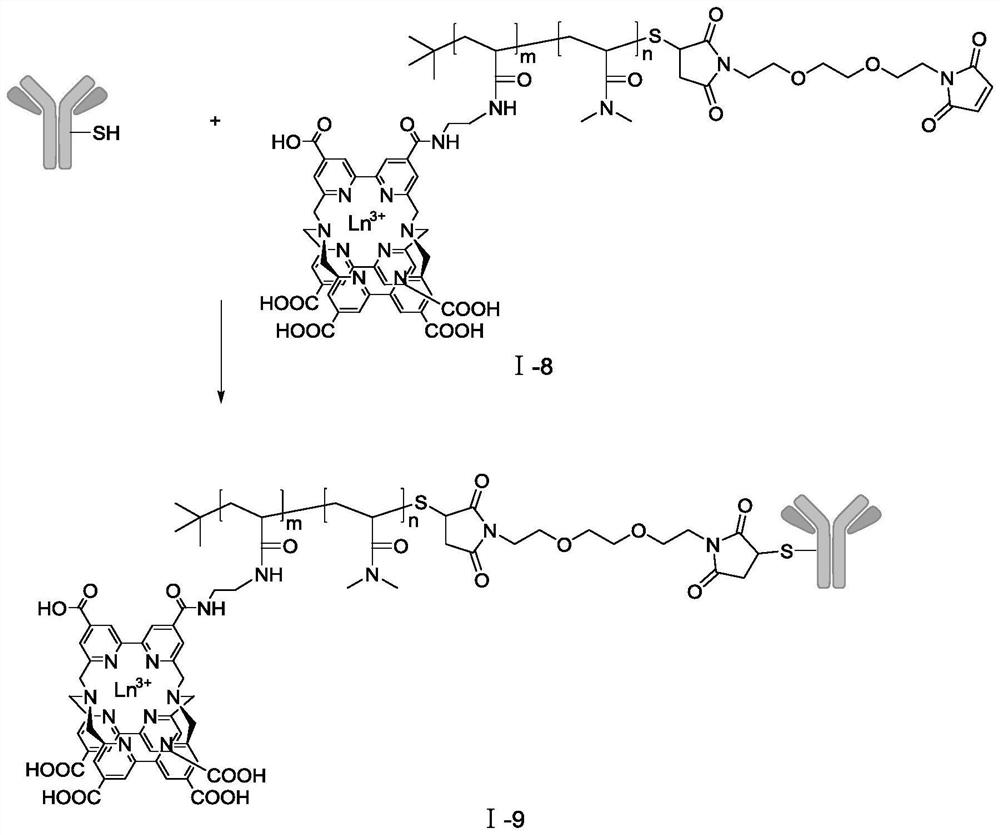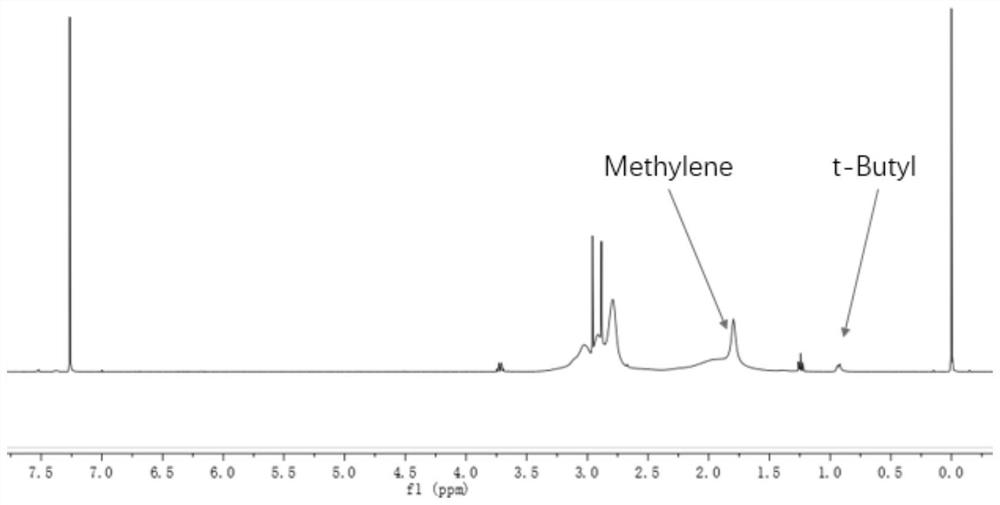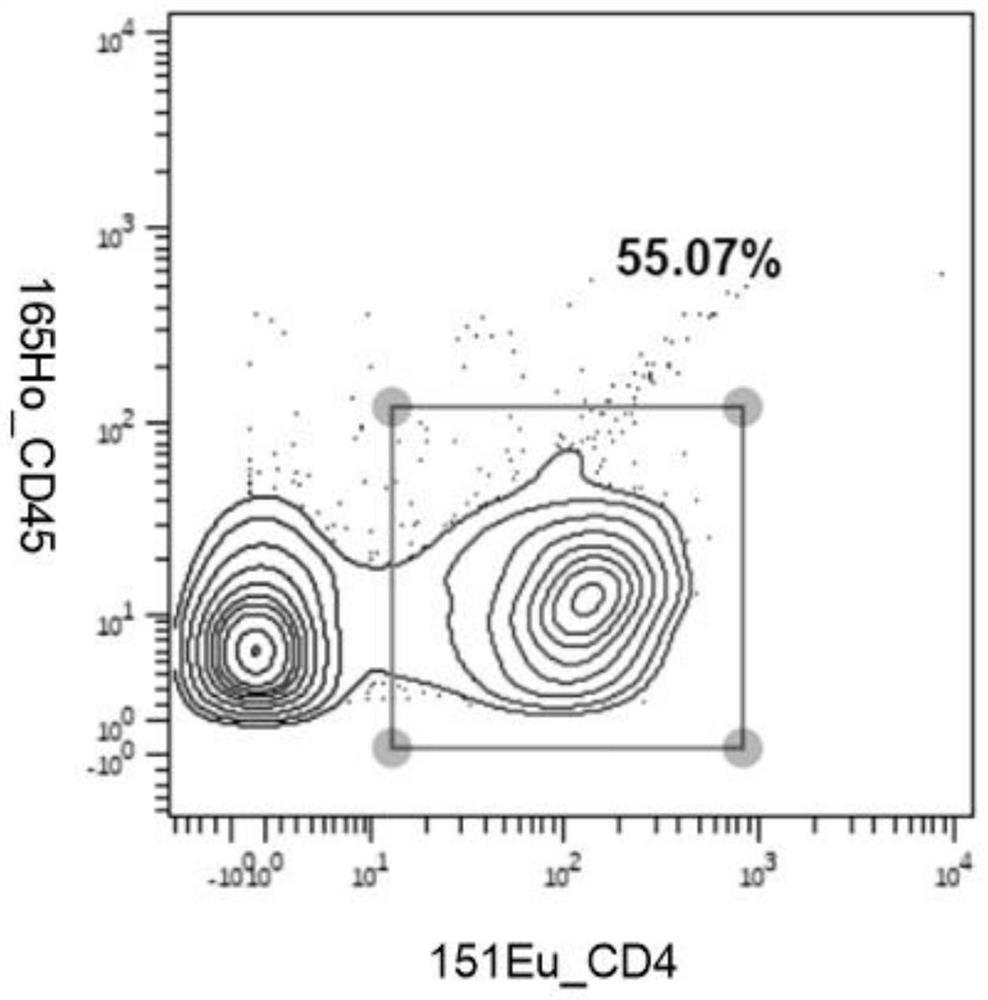Rare-earth cage-like coordination compound metal fluorescent dual-mode label for flow cytometry and preparation method of rare-earth cage-like coordination compound metal fluorescent dual-mode label
A flow cytometry and complex technology, applied in the field of rare earth cage complex metal fluorescent dual-mode label and preparation, can solve the problem of difficulty in meeting flow cytometry detection requirements, weak rare earth metal fluorescence ability, high price, etc. problem, to achieve the effect of reducing leakage, improving fluorescence intensity and signal strength
- Summary
- Abstract
- Description
- Claims
- Application Information
AI Technical Summary
Problems solved by technology
Method used
Image
Examples
preparation example Construction
[0056] The preparation method of the rare earth cage ligand metal fluorescent dual-mode label for flow cytometry comprises the following steps:
[0057] 1) Prepare block monodisperse copolymer, its structure is as shown in formula (Ⅰ-5);
[0058] The block monodisperse copolymer is prepared by N-hydroxysuccinimide acrylate, N,N-dimethylacrylamide, tert-butylbenzocarbodisulfate and azobisisovaleronitrile. The synthetic route of block monodisperse copolymer is:
[0059]
[0060] Among them, formula (I-1) is N-hydroxysuccinimide acrylate, formula (I-2) is N,N-dimethylacrylamide, formula (I-3) is tert-butylbenzocarbodi Sulfate ester, formula (I-4) is azobisisovaleronitrile.
[0061] 2) Prepared by the block monodisperse copolymer, rare earth cage complex, 1,8-bis(maleimide)-3,6-dioxa-octane as shown in formula (I-8) The polymer with rare earth cage complex is shown, the structure of rare earth cage complex is shown in formula (I-6), 1,8-bis(maleimide)-3,6-bis The structure ...
Embodiment 1
[0071] In this example, the monoclonal antibody is selected as CD-4, Ln 3+ Choose Eu 3+ .
[0072] In this embodiment, the preparation method of the rare earth cage ligand metal fluorescent dual-mode label for flow cytometry includes the following steps:
[0073] 1. Preparation of block monodisperse copolymers
[0074] 1-1) Add 2.46g of N-hydroxysuccinimide acrylate, 0.96g of N,N-dimethylacrylamide, 54mg of tert-butylbenzocarbodisulfate and 16mg of azobisisovaleronitrile to 45mL of dry DMF;
[0075] 1-2) The reaction system was deoxygenated by freezing with liquid nitrogen, and then stirred at 60°C for 16 hours under the protection of nitrogen;
[0076] 1-3) Cool to room temperature, add to 400ML diethyl ether for precipitation, redissolve the obtained solid in 1,4-dioxane, and again precipitate with diethyl ether;
[0077] 1-4) The fixed product obtained after filtration was dried to obtain 3.0 g of the block monodisperse copolymer.
[0078] refer to figure 2 , for bl...
PUM
 Login to View More
Login to View More Abstract
Description
Claims
Application Information
 Login to View More
Login to View More - R&D
- Intellectual Property
- Life Sciences
- Materials
- Tech Scout
- Unparalleled Data Quality
- Higher Quality Content
- 60% Fewer Hallucinations
Browse by: Latest US Patents, China's latest patents, Technical Efficacy Thesaurus, Application Domain, Technology Topic, Popular Technical Reports.
© 2025 PatSnap. All rights reserved.Legal|Privacy policy|Modern Slavery Act Transparency Statement|Sitemap|About US| Contact US: help@patsnap.com



